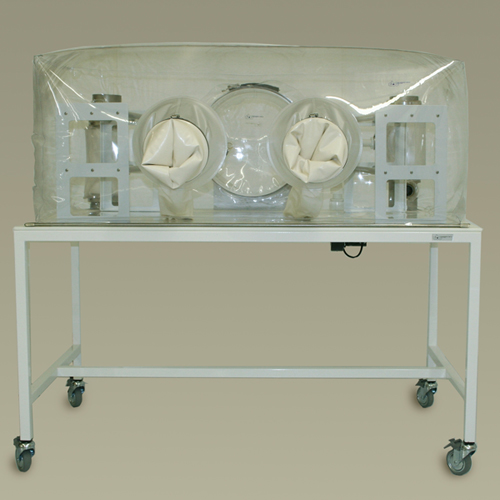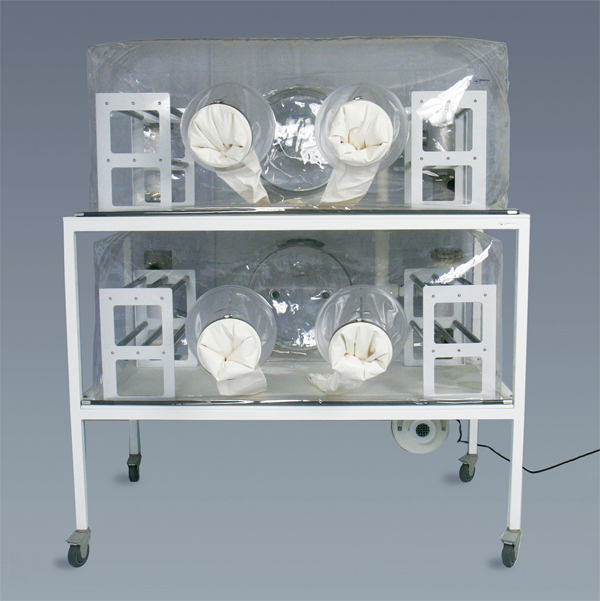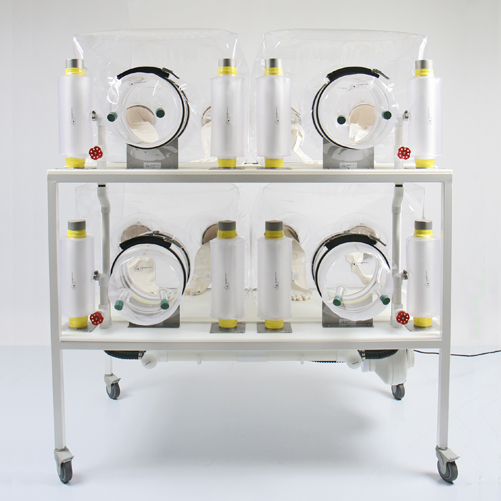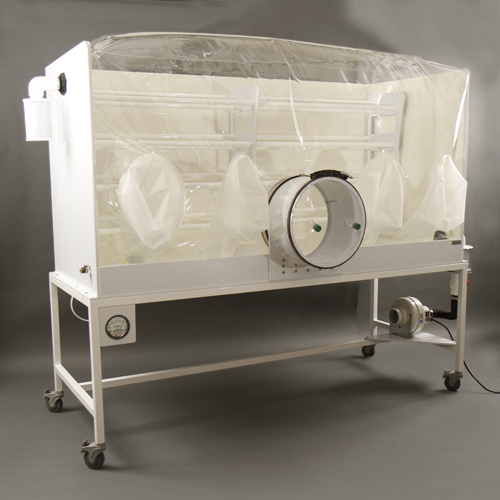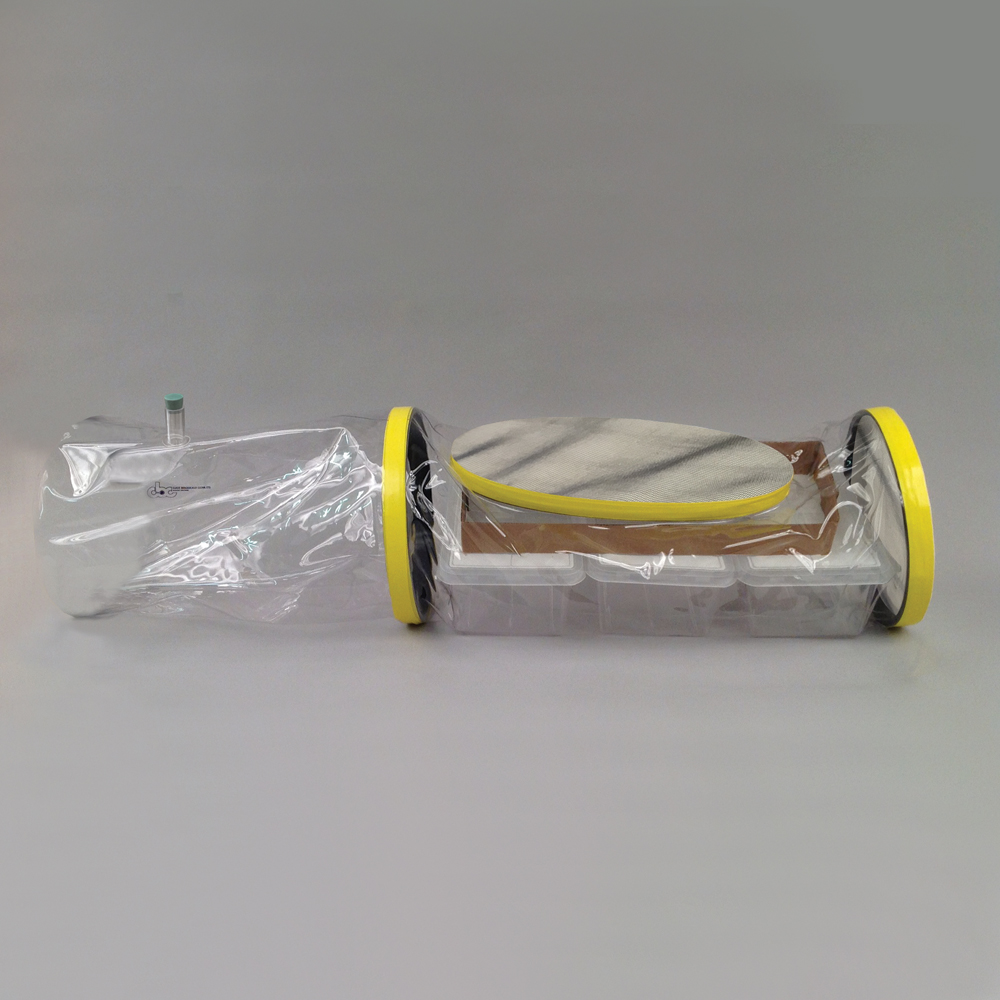Mold Traps
Tech Tip From Alton G. Swennes, D.V.M.

Above: Photo of a mold trap. Autoclaved moistened food in a clear container placed in isolator.
Mold Traps Can be Used as a Simple, Low Tech Method to Help Monitor Gnotobiotic Isolators on Daily Basis

![]() Dr. Alton Swennes oversees 80 flexible film isolators (90% mice and 10% rats) for Baylor College of Medicine's Gnotobiotics Core. The core's team of eight full-time staff members both operate and monitor the isolators.
Dr. Alton Swennes oversees 80 flexible film isolators (90% mice and 10% rats) for Baylor College of Medicine's Gnotobiotics Core. The core's team of eight full-time staff members both operate and monitor the isolators.
Every gnotobiotics core has its own isolator monitoring methods and protocols depending the facilities research needs. Dr. Swennes likes to mix a low tech method along with high tech methods by using a simple mold trap for early detection of dimorphic fungal contaminants
Mold traps are typically autoclaved moistened chow pellets in a container placed on the bottom of an isolator (see photo below). The mold trap can easily be visually monitored daily and also tested by other methods, including staining or fungal culture.
Every mouse and rat housing isolator at Baylor College of Medicine has a mold trap. They are visually examined on a daily basis.
"I've always detected fungal contaminants with our mold traps before they grew on our fungal plates. We've had two fungal positives and both were caught early with our mold traps," said Dr. Swennes.
Dr. Swennes concluded, "It's better to know early on if an isolator has been contaminated. Timely detection allows for a quicker correction so research delays can be minimized and studies can move forward with confidence."
Alton G. Swennes, D.V.M. is the Gotobiotics Core Director at Baylor College of Medicine. He is also the Associate Director, Center for Comparative Medicine and an Assistant Professor, Molecular Virology and Microbiology at Baylor College of Medicine.

